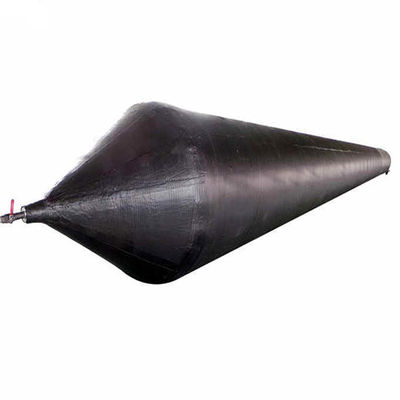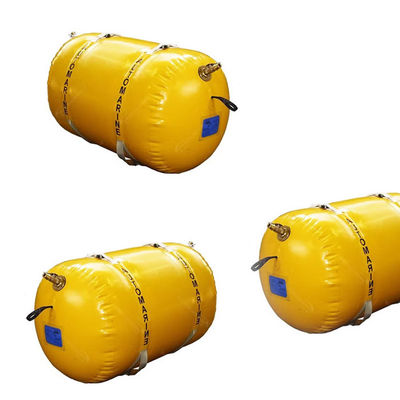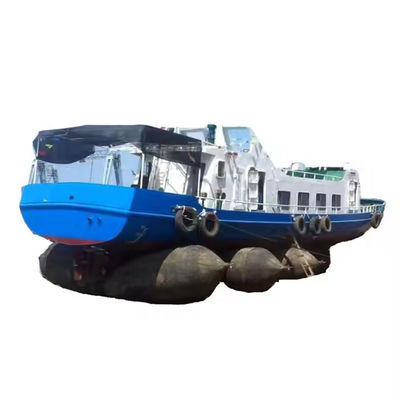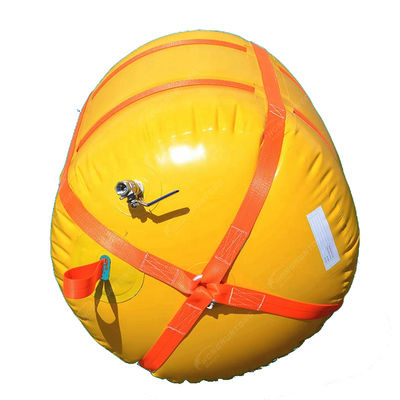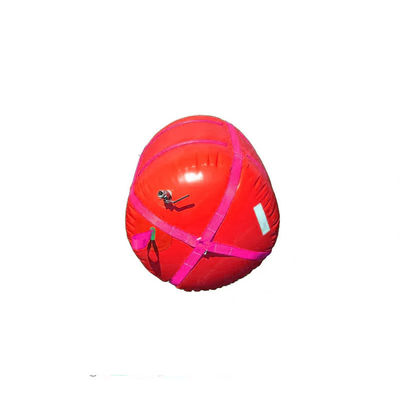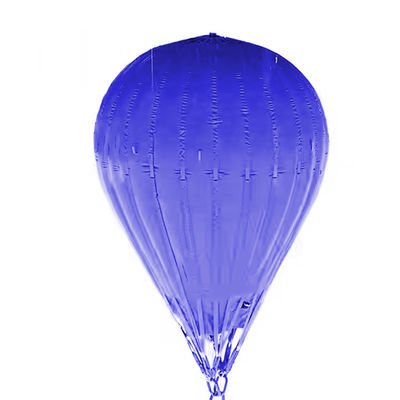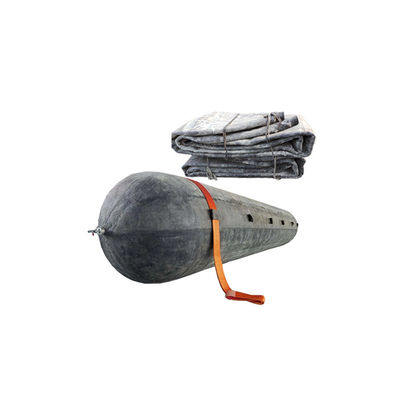Marine Salvage Flotation Air Lifting Buoyancy Bag for Heavy Equipment Lift
Description
Buoyancy bags play a crucial role in ship launching and recovery, offering a safe and efficient method for lifting and moving vessels. When placed under a ship, the bags provide the buoyant force necessary to lift it from dry land or raise it from the water. Constructed from high-quality materials, these bags are designed to endure underwater pressures, harsh weather, and marine conditions. Their flexibility in size and lifting capacity allows them to be used in various ship types and sizes, making them ideal for shipbuilders, marine engineers, and companies involved in ship launching or recovery projects.

Specifications
| Product Name |
Buoyancy Bags |
| Raw Material |
Top Notch PVC Coating Fabric |
| Type |
Parachute |
| Size |
500kg, 1000kg, 5000kg 10000kg,etc |
| Thickness |
0.4-1.2mm, or as request |
| Color |
Yellow, Blue, Black, etc |
| Density |
0.33-0.9g/cm3 |
| Safety Factor |
7:1 |
| Accessories |
Valve, Inflatable Tube, Repair Material |
| OEM |
Welcome |
| Warranty |
3 Years |
|
Tolerances
|
+/- 0.03 on densities
+/- 0.2 mm on thickness
+/- 0 to +3mm on width
+/- 0 to +3mm on length
|
| Model |
Lifting Capacity |
Dimensions |
Appr. Weight |
| Parachute |
[kg] |
[lbs] |
[mm] |
[kg] |
| HM-P01 |
200 |
441 |
800 |
5 |
| HM-P02 |
500 |
1,103 |
1,000 |
8 |
| HM-P03 |
1,000 |
2,205 |
1,300 |
11 |
| HM-P04 |
2,000 |
4,410 |
1,600 |
20 |
| HM-P05 |
4,000 |
8,820 |
2,000 |
50 |
| HM-P06 |
6,000 |
13,230 |
2,300 |
66 |
| HM-P07 |
8,000 |
17,640 |
2,500 |
75 |
| HM-P08 |
10,000 |
22,050 |
2,700 |
80 |
| HM-P09 |
15,000 |
33,075 |
3,100 |
110 |
| HM-P10 |
20,000 |
44,100 |
3,400 |
130 |
| HM-P11 |
30,000 |
66,150 |
3,900 |
170 |
| HM-P12 |
50,000 |
110,250 |
4,600 |
220 |
| HM-P13 |
70,000 |
154,350 |
5,200 |
310 |
| HM-P14 |
100,000 |
220,500 |
5,800 |
450 |
| HM-P15 |
150,000 |
330,750 |
6,600 |
660 |
| HM-P16 |
200,000 |
441,000 |
7,300 |
900 |
| *Note: Other sizes can be customized according to the requirements. |
Features
Easy Inflation Deflation
Streamlined valve systems enable quick and straightforward inflation and deflation with standard diving equipment.
Compact Storage
Designed to be folded and stored compactly, minimizing space requirements for transport and storage.
High Visibility Colors
Available in high visibility colors for enhanced underwater visibility and easy identification.
Reinforced Wear Points
Critical wear areas like the bottom and lifting straps are reinforced to withstand abrasion and friction.
Applications
● Shipwreck Recovery
● Offshore Wind Farm Installation
● Pipeline Installation and Maintenance
● Hydroelectric Power Plant Repair
Advantages
Comprehensive Technical Support
We provide expert consultation, helping clients select the most suitable Buoyancy Bags for their needs, and offer support throughout the lifecycle of the product, from installation to deployment.
Cost Effective Solution
Our Buoyancy Bags provide a cost-effective alternative to expensive cranes, lifting equipment, and other heavy machinery. They offer reliable lifting power at a fraction of the cost, especially for smaller and medium-sized lifting tasks.
Global Shipping and Distribution
We have a strong logistics network, enabling us to ship Buoyancy Bags worldwide efficiently. Our global reach allows us to serve customers in various industries across different regions.
Environmentally Friendly
We use eco-friendly materials and manufacturing processes, ensuring that our Buoyancy Bags have a minimal environmental impact. They help preserve marine ecosystems while offering a practical solution for lifting and debris removal.

FAQ
1. Are Buoyancy Bags resistant to punctures or damage?
Buoyancy Bags are designed with tough, abrasion-resistant materials to reduce the risk of punctures or damage. However, proper care and handling are essential to extend their lifespan.
2. How are Buoyancy Bags inflated?
Buoyancy Bags are typically inflated using an air compressor or manual pump. The inflation system is designed to be fast and efficient, allowing for quick deployment in emergency or time-sensitive situations.
3. How are Buoyancy Bags deflated?
Deflation is achieved by opening a valve on the bag, allowing the air to escape quickly. This process is straightforward and can be done in a short amount of time for easy retrieval or repositioning.
4. Can Buoyancy Bags be used in rough weather conditions?
Yes, Buoyancy Bags are built to withstand challenging weather conditions, including high winds, strong currents, and stormy seas. Their robust design ensures reliable performance even in harsh environments.

 Your message must be between 20-3,000 characters!
Your message must be between 20-3,000 characters! Please check your E-mail!
Please check your E-mail!  Your message must be between 20-3,000 characters!
Your message must be between 20-3,000 characters! Please check your E-mail!
Please check your E-mail! 
